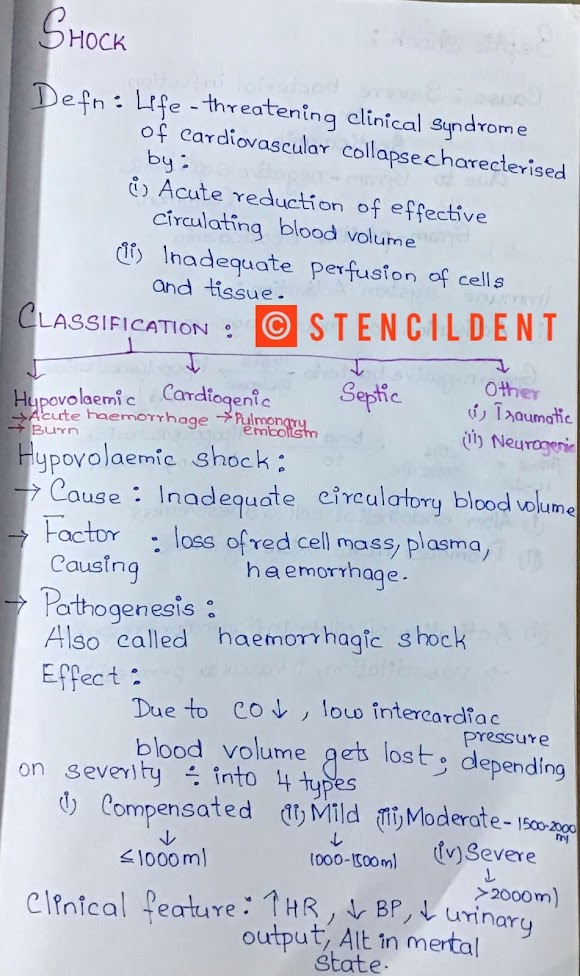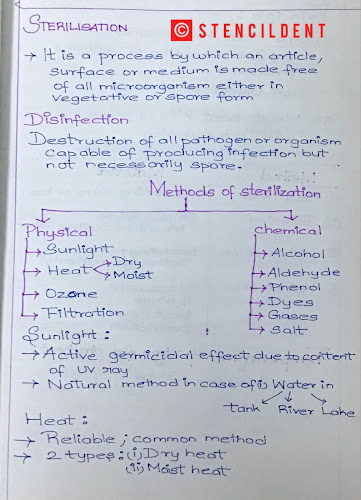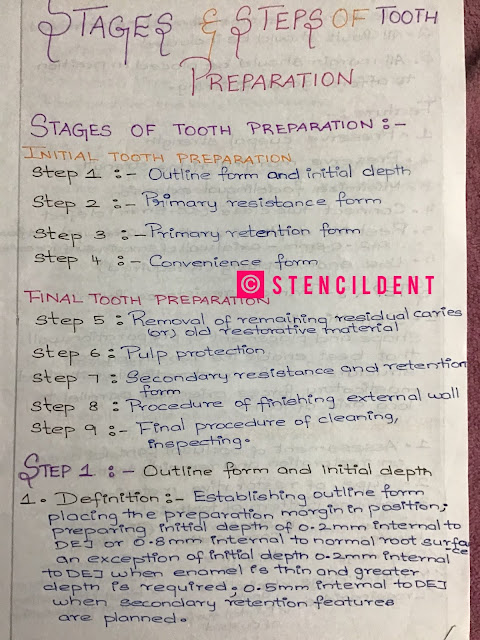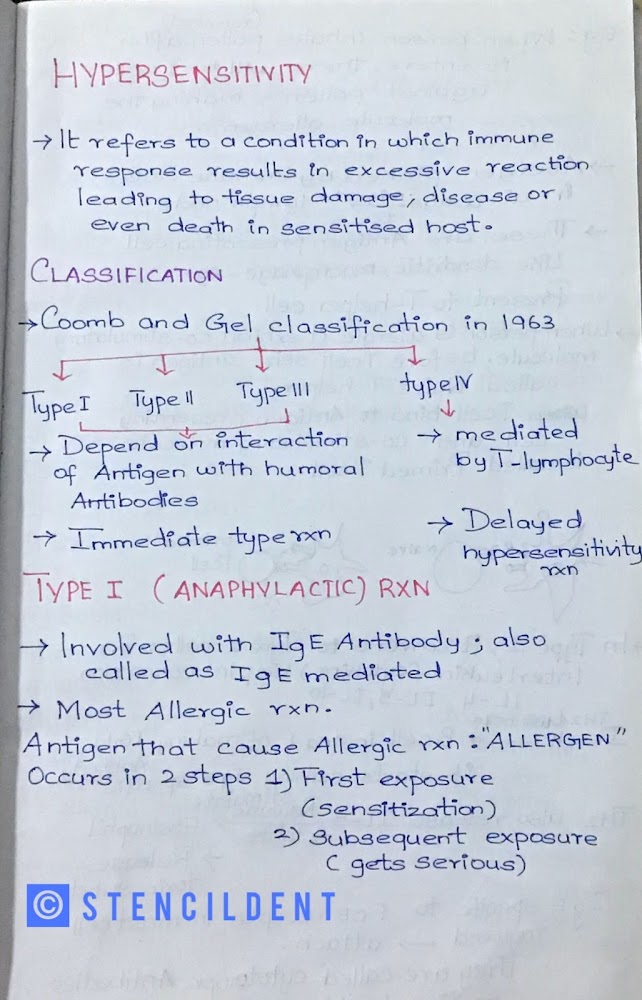Shock pathology notes
SHOCK
HELLO! DOCTOR VANAKAM, The topic of discussion for today is SHOCK as I had already mentioned it in my previous post on sterilization techniques in microbiology if u haven't read it so far check it out using this link https://www.stencildent.com/2020/07/sterilization-technique-in-microbiology.html without any further ado lets get started.
CONTENTS:
1) Definition
2) Classification
3)Hypovolaemic shock- pathogenesis
4)Septic shock
5)Etiology and pathogenesis of circulatory shock
6) Complication
1) DEFINITION :
It's a life-threatening clinical syndrome of cardiovascular collapse characterized by acute reduction of effective circulating blood volume, inadequate perfusion of cells and tissue.
2) CLASSIFICATION :
Shock is classified into hypovolaemic, cardiogenic, septic, other shocks which include traumatic and neurogenic
3) HYPOVOLAEMIC SHOCK:
Cause: inadequate circulatory blood volume
The factor causing: loss of red cell mass, plasma, hemorrhagic
PATHOGENESIS:
hypovolaemic shock is also known as hemorrhagic shock
effect: it is due to carbon dioxide reduction, low intracardiac pressure blood volume gets lost
depending on the severity of blood volume lost it's classified into 4 types
- compensated - less than 1000ml
- mild - between 1000 to 1500 ml
- moderate - 1500-2000 ml
- severe- more than 200ml
CLINICAL FEATURE:
- Heart rate increases
- Blood pressure decreases
- Urinary output reduces
- Alteration in mental state
SEPTIC SHOCK:
The cause for septic shock is severe bacterial infection or septicemia, due to gram-negative septicemia which the most common reason, gram-positive septicemia.
IMMUNE SYSTEM ACTIVATION:
- Activation of macrophage-monocyte:
2) Alter endothelial cell adhesiveness
3) Promotes nitric oxide synthase
4)Activation of other inflammatory responses: vasodilation and increased vascular permeability
ETIOLOGY :
1) HYPOVOLAEMIC :
TRAUMA
SURGERY
BURN
DEHYDRATION
2) SEPTIC :
GRAM POSITIVE SEPTICIEMIA
GRAM NEGATIVE SEPTICAEMIA
3) CARDIOGENIC:
DEFECT IN EMPTYING
DEFECT IN FILLING
4) OTHER TYPE :
TRAUMATIC
NEUROGENIC
PATHOGENESIS:
Initially, there is a reduced effect of circulating blood volume due to hypovolemic and septic shock that leads to a decreased venous return to the heart due to cardiogenic and other types of shock, there is decreased cardiac output, blood flow and supply of oxygen this led to anoxia which further leads t inflammatory mediator and results in SHOCK.
COMPLICATION :
- Vasodilation
- Increased vascular permeability
- Disseminated intravascular coagulation
- Hypotension
- Inadequate perfusion of cells and tissue
- Organ dysfunction
General talk:
vanakam, we all very well know shock are of different types apart from shocks we discussed today in pathology we do know other types like an electric shock, the shock that we experience in the exam hall when we see the question that we omitted during study thinking that it might not be asked this year and surprisingly you get it as highest mark scoring unit I know you guys can feel the pain while reading this itself and terrible shock ever when your best friend asks for additional sheet while you are struggling to fill up pages, never feel bad about it when we are here to help you out feel free to contact us , all the contact information is been posted on the website home page. like this, there are a Humpty dumpty number of shocks we experience it might be a pleasant or displeasing one, do let me know in the comment section below on your best shocking moments?it might seem small to others but mean the world to you like a photograph with your favorite celebrity, anything that made your day unforgettable.
The Upcoming Post:
Is on the healing of tissues about the definition of repair stages , healing by first intention difference between first and secondary intention , the complication of wound healing with relevant pictures.
I hope you all must have understood about shock if you like this post do let me know in the comment section as this will motivate me to post more such content and don't forget to share your shocking moments with me.
Thank you






It's very easy to learn and useful too. Thank you!!
ReplyDelete